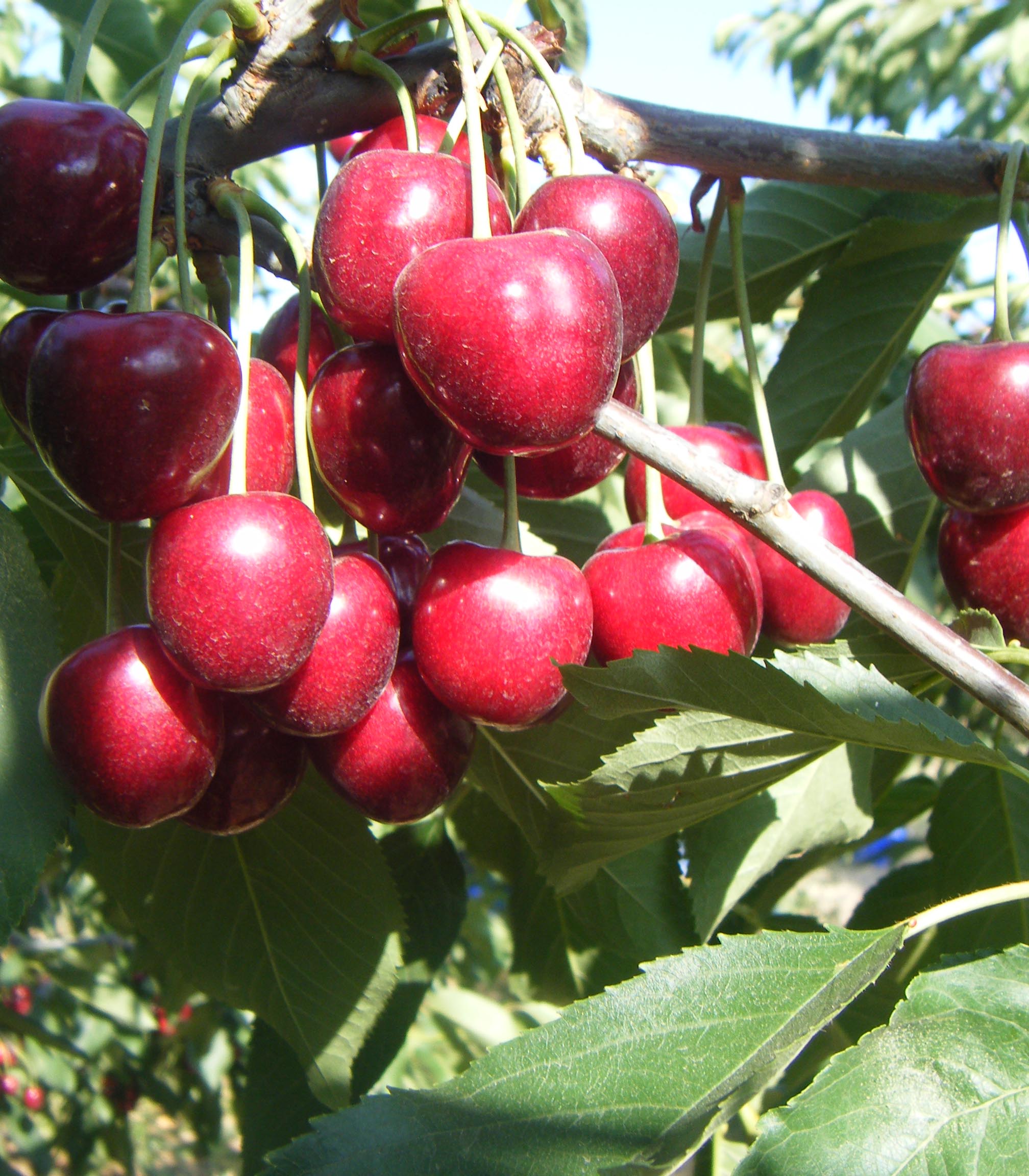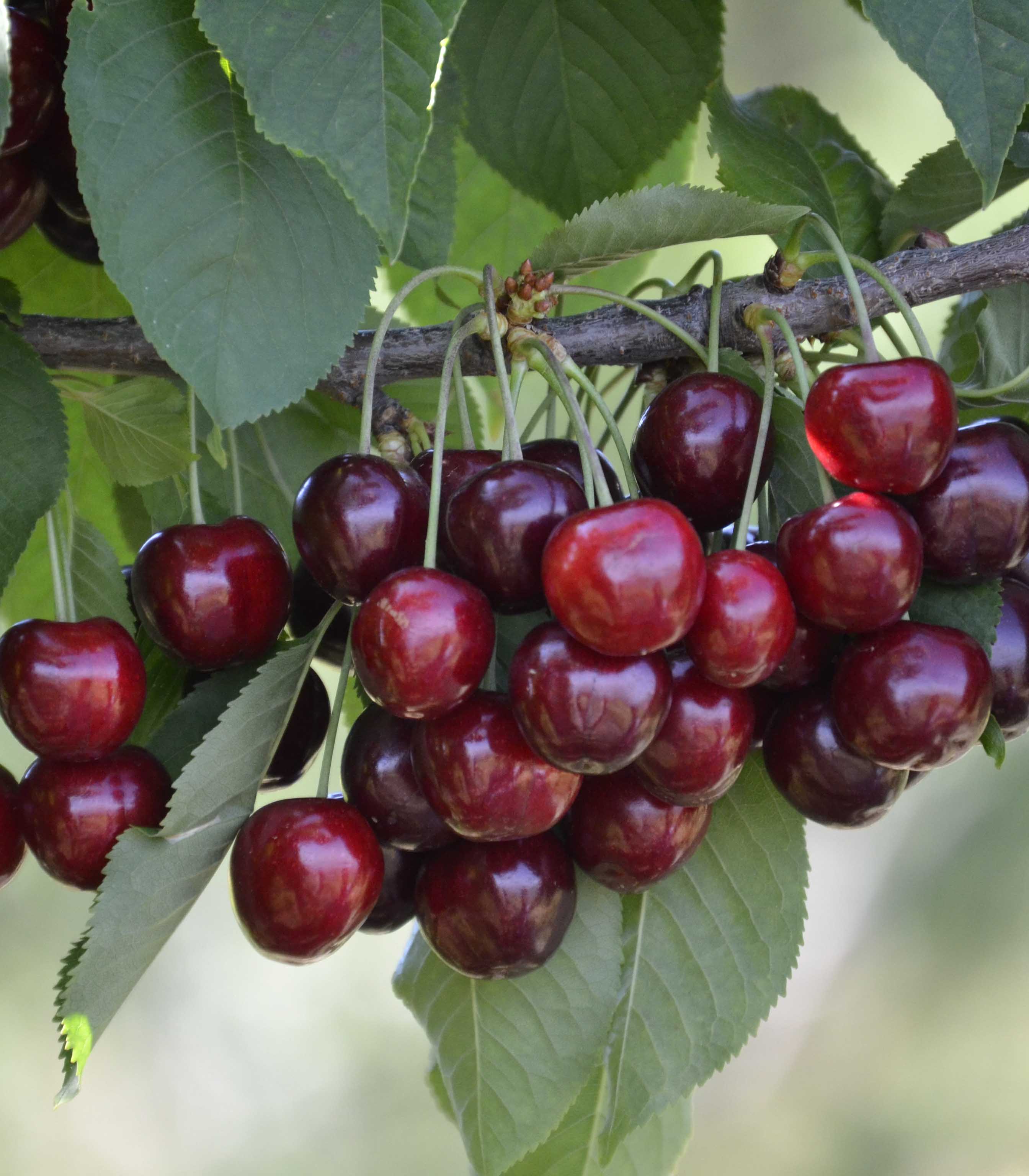
Origin of sweet cherry is the Caspian Sea, Southern Caucasia and Northern Anatolia and that of sour cherry is the Northern Anatolia Mountains extending between Istanbul and the Caspian Sea. Even, the botanical name of dour cherry in Latin, Prunus Cerasus, is derived from the former name of modern Giresun (Cerasus). Spreading of sweet cherry and sour cherry across the continental Europe has been achieved by birds and animals carrying their seeds. Some colonists took sweet cherry to America. Most of the varieties were imported from the United Kingdom and first modern sweet cherry growing started in the state of Oregon on the Pacific coast.
Sweet and sour cherry fruits are quite rich especially in mineral substances. Other than a few varieties used in industry, almost all sweet cherries are consumed fresh. Due to its fruit juice yield (70-75%) and high total acidity (3%), sour cherry produced is very suitable for processing as fruit juice. Further, sour cherry produced is evaluated in the form of deep-freezing, preserved food and jam and especially exported to foreign countries in a frozen state.
Rapid increases occurred in sweet and sour cherry production in Turkey particularly between 1865 and 1985. Sweet cherry production which was 47.000 tons in 1965 reached 130.000 tons in 1985, achieving an increase of 76 percent. Sour cherry production which was 24.000 tons in 1965 reached 85.000 tons in 1985, achieving an increase of 245 percent. In this context, Turkey occupied the 6th place in sweet cherry and 5th place in sour cherry in the world. Although this pace could not be achieved, increases were achieved in subsequent years and sweet cherry production rose up to 215.000 tons and sour cherry production to 120.000 tons in 1997.
Sweet cherries start to bear fruits at 5-6 years of age, but it takes 10-12 years to yield fully and economically. Although they live a hundred years, their economic life is 25-30 years. Economic life of sour cherry is 15-20 years.
Climate Requirements
In sweet cherry growing, the most important of the climatic factors is temperature. While blossom buds withstand –2,4°C, blooms freeze at –2°C. Woody parts of sour cherries may withstand –40 °C. Sour cherries withstand low temperatures better than sweet cherries. As blossoming is later than in sweet cherries in spring, probability for sour cherry blossoms to be damaged by late frosts of spring is lower.
For sweet cherries, winter dormancy requirements are more important than for sour cherries, they should receive sufficient winter cold so that they could go out of dormancy. Delay and irregularities are observed in the blossoming of sweet cherries of which cooling requirements have not been satisfied. It is more apparent in such sweet cherry varieties which highly need cooling as Lambert, Napoleon and Bing. Failure of sweet cherries to satisfy their winter dormancy needs sufficiently causes problems in terms of pollination as well. Because, as the variety requiring lower cooling need blooms earlier than the variety requiring higher cooling need after winters that have passed warm, these two varieties cannot pollinate each other. As sour cherries are self-pollinating, there is no problem in this matter. In general, cooling period is 1100-170 hours below +7,2 °C sweet and sour cherries.
In sweet cherry and sour cherry growing, it is most suitable that rain spreads throughout the year. In general, in places receiving 600 mm of rain, sour cherry growing may be achieved without any need for irrigation. Rainy weather is not desired during blooming and fruit formation in sweet and sour cherries. Because heavy rain makes pollination difficult and causes fungal damage to increase during blooming period. Also, rain which may fall during fruit ripening causes the fruits to crack and reduces their market value.
Soil Requirements
Well-drained, deep, soils which may be aerated and regularly irrigated in summer months are the best ones for sweet cherries. A tree weakly grows in poor soils without good drainage and sparse fruit branches occur. Also, fruits remain small in dry soils. Roots remain exposed and the tree grows slowly in places where groundwater is high. In such cases, the risk for the tree to be affected by drought and frost increases.
Sour cherries are more tolerant in terms of soil. Sour cherries may also be grown in dry, sandy or calcareous soils. Particularly in places where the İdris rootstock is used, resistance of sour cherries to drought increases. The most ideal soil for sour cherry is the one which is suitable for sweet cherry growing.
Propagation
The most appropriate propagation method is propagation by grafting. The most appropriate grafting method is stagnant bud graft. Stagnant bud grafting should be first started with wild cherry seedlings in nurseries. In general, as vegetative growth lasts longer in İdris rootstocks, i.e. as it generates bark until late periods, it is possible to start grafting late and to continue this work until the beginning of autumn. Starting time for stagnant bud graft may be scheduled by the maturing of bud eyes and the finishing time by the state of generating bark.



